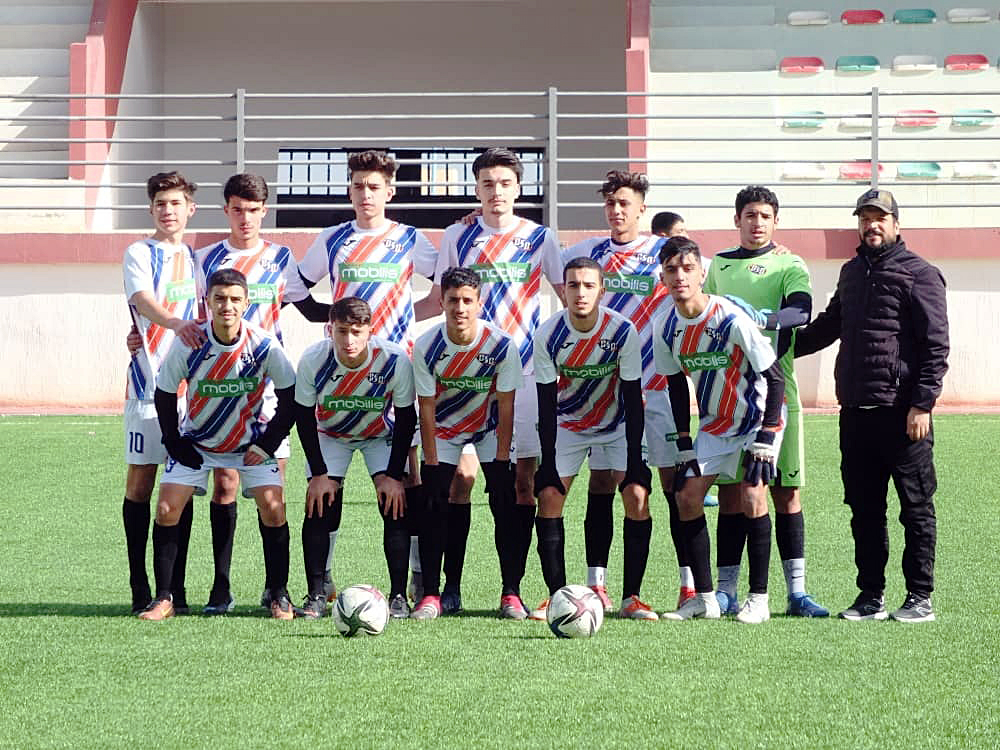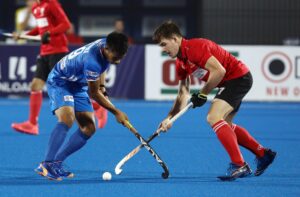Algerian football head coach Sofiane Belhachani shares a complete guide for football training and decodes the fundamentals
It is a common belief that a person requires a minimum of 10,000 hours to achieve ‘greatness’ in any discipline, ranging from music to sports. But, veterans in the world of football will agree that it may take more than 10,000 hours to achieve perfection in the sport, considering its super dynamic nature. Top players often take up an average of four to six hours of training every day. What they perform live in a match on the field is barely a fraction of their time spent for training. But, what are the key points to be remembered for training in football?

Firstly, football training needs proper adaptation in sync with the stage of learning. That’s what Algerian football coach Sofiane Belhachani believes. “It is essential to establish objectives to be achieved in each stage of learning, taking into account the players’ age and size, psychological development, puberty, muscular and physical development, learning speed and level of natural potential already achieved,” explains Sofiane, who is presently serving as the Head Coach of U-19 team of BSB Academy in Batna, Algeria.
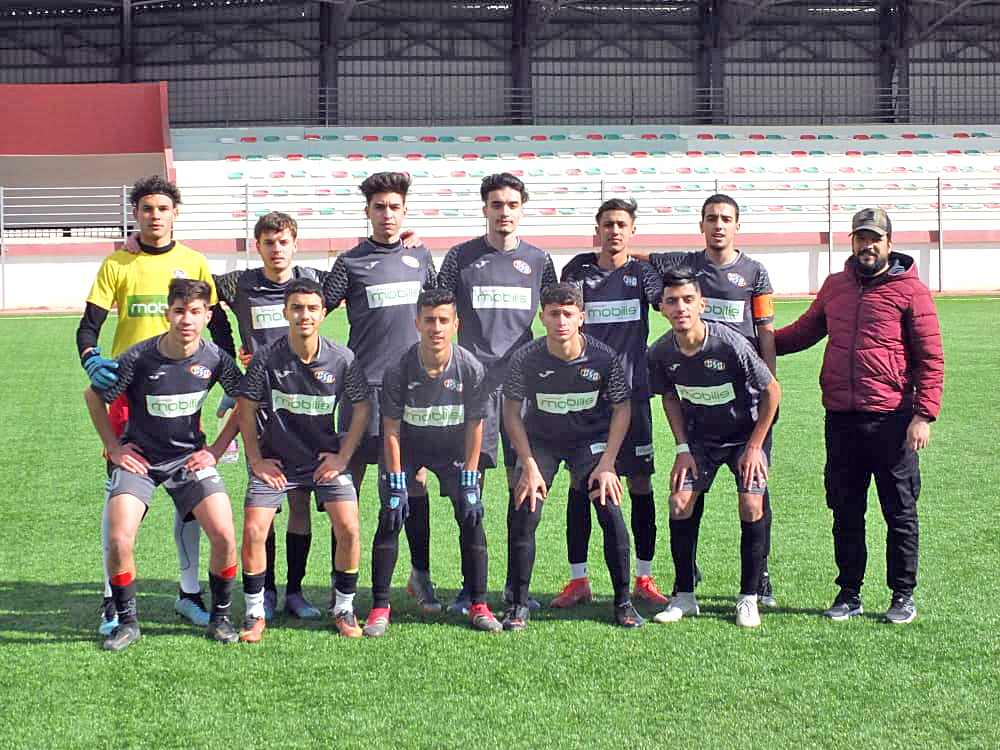
Sofiane—who has been training young players since the past ten years—claims that when children in the age group of 6 to 12 years are introduced to the sport for the first time, they need to undergo proper training to be able to find their ‘position on the ground’. “This is the initial stage of training where emphasis is laid on developing their ability to interact with the team-mates. The focus is also on coordination exercises,” he explains.
In the period of consolidation (basic training for the age group of 13 to 15 years), the focus should be on development and education. “Basic training forms a key step in the success of the overall training. It is the golden age for the development of technical qualities and laying the technical, tactical and psychological foundations. At this age, players work on basic technical skills, individual tactical awareness and basic principles of the game, as well as they are starting to look at mental attitudes such as concentration, self-confidence, perseverance, will, etc,” he says.
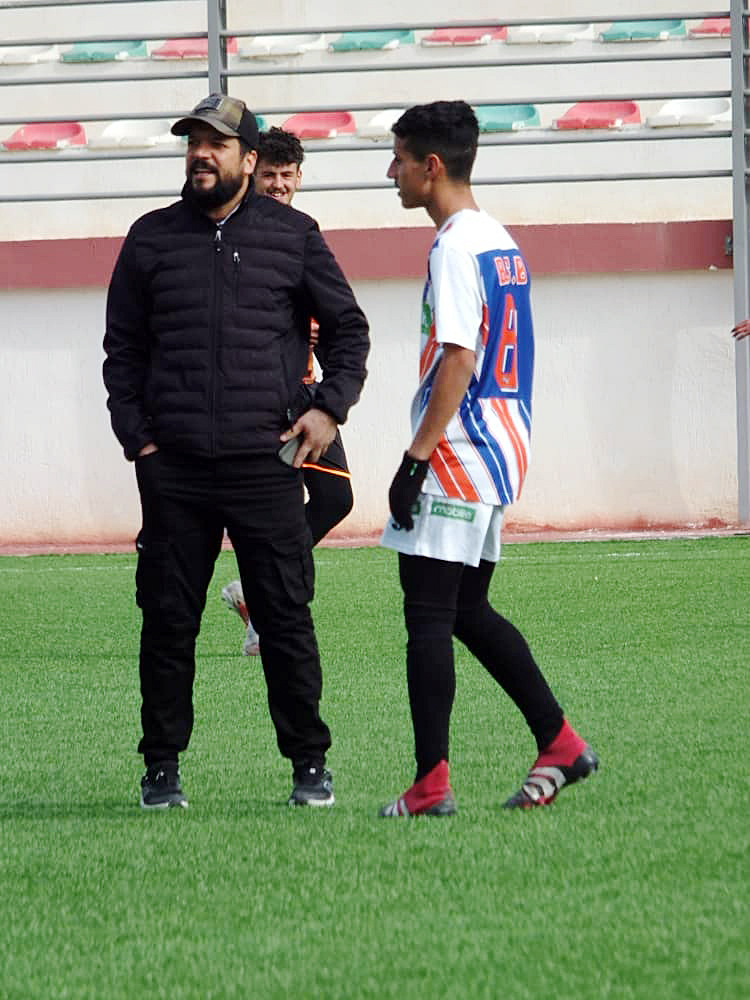
“The focus is on learning, practising and transposing the technical skills mastered to real games. Learning the principles of the game in order to improve players’ reading of the game, practising collective technique on the ball and additional physical training devoted specifically to developing aerobic capacity and speed, as well as exercises for suppleness, coordination and movement, complete the training programme,” the coach adds.
“The intermediate training stage (for the age group 16 to 18 years) is the time to reinforce the qualities already acquired to enable the player to improve performance. It is also the opportunity to work both qualitatively and quantitatively on the key technical, tactical, physical and mental factors. It is the time to focus on teaching techniques specific to the player’s position and techniques while moving. At the same time, training should also focus on basic techniques. The players in this age group must be trained to master different formations and organisation (attacking and defensive) and adapt to different systems of play, reinforcing the athletic and physical qualities already acquired. They should be introduced to power exercises (MAP) The training should be about stabilising and increasing muscle groups through muscle-strengthening exercises and gaining control over mental attitudes,” he further explains.
The focus and nature of training changes for players aged between 19 to 21 years. As per Sofiane, these players are in a ‘tricky situation.’ “It is often observed that these young players have not yet completely finished their training. There are some gaps, particularly in terms of physical condition (muscle strength), technique (heading the ball) and psychological attitude (perseverance). These learning gaps can hinder a player’s progress to the ranks of elite players, if not properly addressed,” he shares. Even at the highest level, it is often noticed that advanced training is necessary for the professional players as well.
What is football training?
According to experts, football training can be broadly classified into three branches—physical, technical and tactical. All these aspects complement each other. Experts say it is important to give equal emphasis to each of these training components for success at individual as well as team level. “Proper training not only ensures that you can stay physically fit on the pitch for 90 minutes, but also ensures that you are able to maintain the right attitude or mentality throughout the match. You either use it or lose it. If you aren’t constantly looking for ways to improve and maintain your physical, technical and tactical or mental abilities, you will not be at your best form,” says Sofiane.

Decoding the branches
The Physical training is all about preparing the body to keep the player powered up through the matches. It enhances the ability of a player to run, jump and shoot as fast and powerfully as possible. According to experts, the best training involves a combination of cardio and resistance training. Cardio training involves running, cycling, among others. Resistance training is about weightlifting (compound and isolation movements) and bodyweight exercises. Focus should also be on enhancing recovery, flexibility and mobility. Technical training focuses on developing the technical skills on the pitch. In most cases, it includes dribbling, passing, shooting, heading and tackling techniques. However, the technical training can also be designed based on the player’s position. For instance, goalkeepers are required to work on their diving, catching and throwing skills. While footwork and agility can be enhanced as part of the individual training, for enhancement of crossing and tackling skills, team training is mandatory, says Sofiane. The third component—tactical training— is the most important aspect to be able to function better as a team. Experts often refer to it as the theoretical side of the game. It focuses on set pieces, formations and the tactics needed for different attacking and defensive moves. According to Sofiane, tactical training can be imparted either on the ground or in a classroom setting. “At higher levels, video analysis of the own team/squad and the opponent is conducted,” he explains.
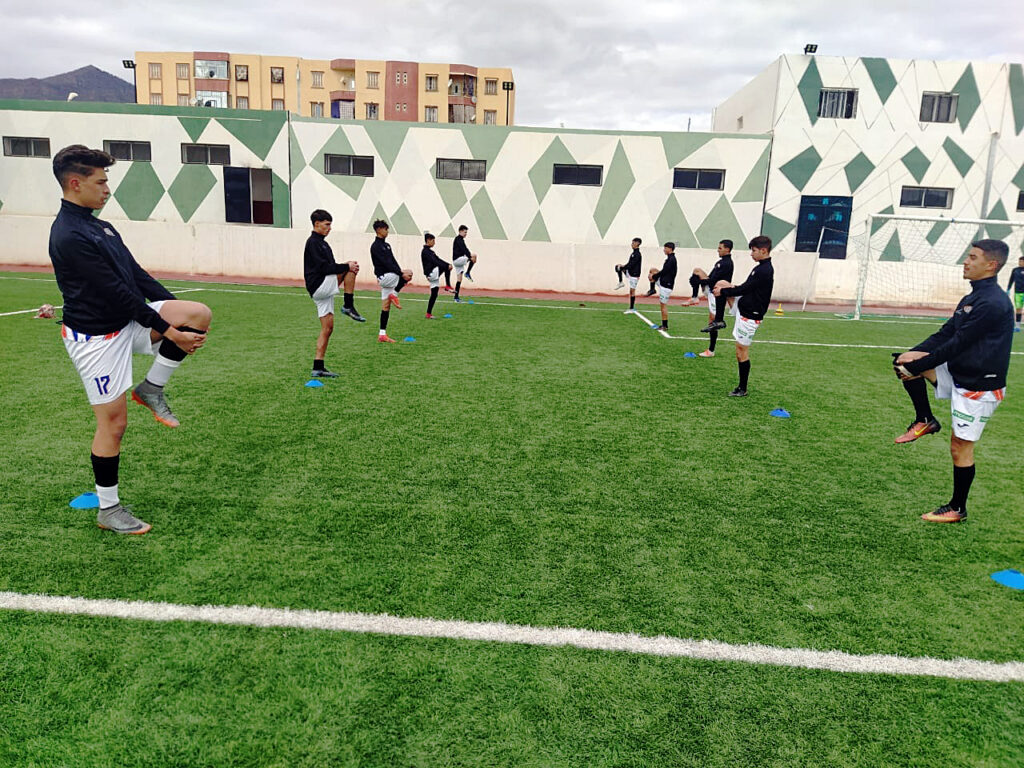
How often should a player train?
To this, Sofiane says there’s no strict timetable! It varies with players and clubs, who customize the training sessions as per their own requirements across the globe, he adds. It is generally found that the amateur teams often take up one or two team training sessions in a week, covering all three aspects of training. “But, it is also a player’s individual responsibility to work towards enhancing his or her fitness, strength, flexibility and agility. So, they will have to decide for themselves,” he says. For professional players, Sofiane, however, shares a standard microcycle that can be followed for training in between matches. “As per the microcycle, Day -5 should be dedicated towards technical coordination (Game 6vs 2 or 7vs 3) & tactical training (6 vs 6 or 7 vs 7) or aerobics, interval running or Fartlek (playing around with speeds). Day-4 should be about speed/strength training with the ball or without it and basic technical training in groups. Day -3 should be dedicated to aerobics and technical tactical training (2 vs 1, 3 vs 2) with an interval in between, followed by game training (3 vs 3, 6 vs 6 & 11 vs 11). Day -2 should focus on specific recovery, tactical recovery (11 vs 00) and standard situation. On Day 1—which is the day before the match day—should focus on tactical, technical & mental training. Emphasis should also be given to speed training (reaction and acceleration with ball). Tactical team exercises should be taken up and focus should also be on understanding the final tactics,” he says.
The coach also explains that it is important to maintain a balance between effective training and overtraining. And, thus ‘day off’ becomes significant for both beginners and professionals. “Overtraining can be harmful. It can lead to injury and fatigue. You need to give your body adequate time for recovery after a heavy training session,” he says.
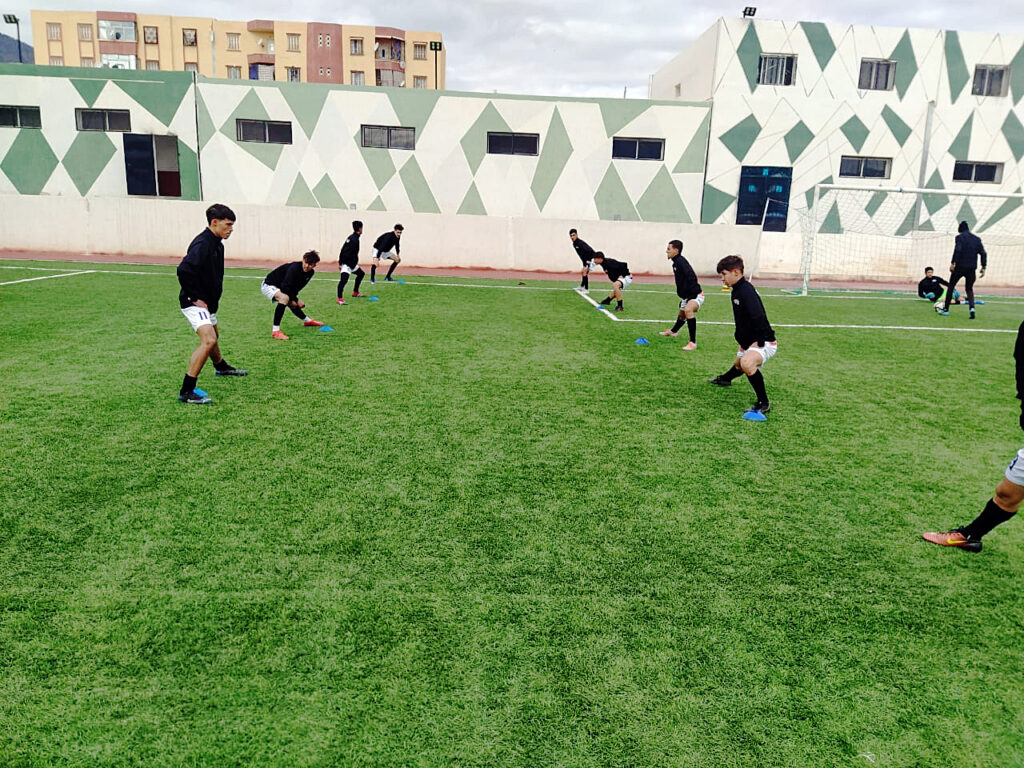
‘Think quality, not quantity’
The coach believes one should ‘think quality and not quantity’ when it comes to the duration of a training session. However, training shouldn’t last too long, especially if you are regular on the pitch, says the coach. “A traditional team training session may last for about 90 minutes to two hours. But in case of individual training, one can complete strength training or a cardio session in less than an hour. Some sessions, like HIIT sessions, on a treadmill or exercise bike, can take only 20 minutes,” he explains.
Get equipped
It isn’t enough to have a good pair of boots and a ball only. There are some essential gears a player or the team must have. The list of equipment for team training may be long. But, there are some kitbag essentials for football training drills and practice matches, such as: Football Cones, Bibs, Agility ladders, Hurdles, Slalom poles and Ball rebounders. An ample supply of footballs and a pump are must. Attention should be also paid on a player’s clothing and individual kit that includes shorts, shirt, socks, shin pads, football boots and goalkeeper gloves. For indoor physical training at individual level, one can also invest in some dumbbells, kettlebells or sandbags, an indoor bike, treadmill or rowing machine.
Challenges & words of wisdom
The coach believes that it is a challenging task to be able to develop a footballer in all respects, whether physical, technical, tactical or psychological and allow him to progress until he becomes a professional player. “Each coach has his own perception of the way of playing. The biggest challenge is to be able to translate his ideas on the field in sync with the capabilities of the players, using the means available to him to reach the highest performance level. He also advises coaches to create their own football strategy in their minds before executing it on the field. He urges coaches to be original in their way of creating the strategy.

Overview of a training session
Subheader: Warm-up (10 Minutes): Every single training session should start with a warm-up. Ignoring the warm-up can lead to injury. It prepares the body and the mind for the activities. Besides team warm-up sessions, players may need to work independently for specific activities. For instance, they may have to do foam rolling of a tight muscle. The most commonly-followed warm-up regime focuses on RAMP (Raise, Activate, Mobilise and Potentiate) theory. First raise the heart rate, blood flow and core temperature with light movements like running or skipping. Next, activate and mobilise key lower body muscles with squats, lunges and other stretching exercises. The final part of warming-up is to potentiate or prime your nervous system for speed. For this, sprinting, jumping and fast feet can be practiced.
Main Training Session (30 Minutes)
The session should have a clear goal. It should address one single issue like Passing, Crossing, Ball control, Shooting & Set piece, etc.
Game Situation (30 Minutes)
This will be a short session to practice and continue developing the skills from the main session.
Cool Down (5 Minutes)
It saves the players from cramp and potential dizziness. Cooling down sessions helps in lowering the heart and breathing rate and the body to relax.

Know the expert
Sofiane Belhachani has been into the field of football training for the past 10 years. He has the capacity to improve players from U-6 to U-19 level by establishing a learning environment that is tailored according to their age and ability levels and enhances their technical physical and mental capabilities.

